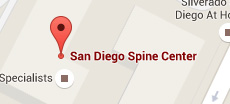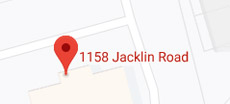Degenerative Disc Disease
Degenerative disc disease (DDD) is not really a disease but refers to the changes in the spine as a result of the normal aging process. The intervertebral discs act as shock absorbers for the spine. Over time, these natural shock absorbers get worn out and degenerate due to aging, trauma or injury resulting in Degenerative disc disease (DDD). Some people are not aware of their condition until being examined for another health problem.
Traumatic injury, postural strain, repetitive movements, overuse, improper posture or poor body mechanics and being overweight may alter the structure and functioning of the discs. All of these structural changes could place abnormal stress over your spine causing pain.
Disc changes
The normal intervertebral disc is composed of a nucleus pulposus, at the center, surrounded by a fibrous ring known as annulus fibrosus. The nucleus pulposus is a soft jelly like substance that is well hydrated and responsible for the shock absorbing functionality of the disc. Over time the nucleus pulposus begins to dehydrate and stiffen, failing to provide shock absorber action. While this happens, the height of the disc is reduced and the stress on the surrounding annulus fibrosis is increased, resulting in damage to the annulus. This can cause instability of the spine and can produce pain.
Symptoms
Some individuals with DDD may not experience any symptoms, however when symptoms occur they develop gradually and worsen over time. Depending upon the location of the affected disc the condition may cause:
- Neck or arm pain
- Back pain
- Numbness or tingling in the legs
- Pain in the thighs and buttocks
- Rarely, bowel and bladder dysfunction
Your physician will diagnose DDD based on your symptoms, medical history and a physical and neurological examination. Your reflexes are evaluated and any muscle weakness, loss of sensation or other signs of neurological injury are noted. Imaging tests such as X-rays, magnetic resonance imaging (MRI), and computed tomography (CT) scans can help to confirm the diagnosis. X-rays of the spine help to identify the collapsed disc space. Computed tomography (CT) scans and magnetic resonance imaging (MRI) scans may be used to reveal disc and endplate changes.
A discography may be performed to confirm the diagnosis. It is a diagnostic procedure where a contrast dye is injected, to precisely locate the damaged spinal discs causing pain.
Treatment
Treatment of DDD comprises of non-surgical and surgical treatment options. The non –surgical treatment options include anti-inflammatory and pain medications, muscle relaxants, physical therapy, spinal injections, certain types of braces, and acupuncture. To increase the success of the treatment, your doctor may combine two or more treatment modalities.
Surgery is usually considered for patients with unstable spine or neurological dysfunction and persistent pain not responding to non-surgical treatment. Spinal stabilization and fusion may be performed to ease your pain and stabilize the spine.
For any concerns or queries about degenerative disc disease consult your doctor. Your doctor is a reliable resource to answer all your questions and help you understand the condition better.







